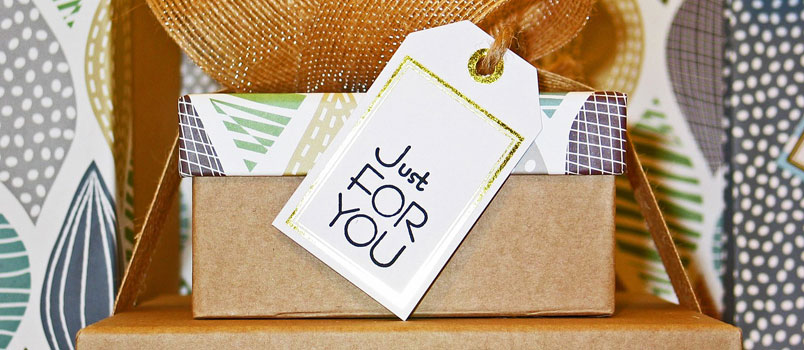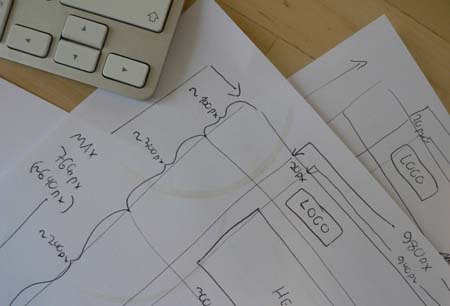With millions of apps available — 2.56 million in the Google Play store and 1.85 million in the Apple App Store as of the first quarter of 2020 — the competition to win over users is fierce. We only have so much space available on our smartphones, after all. Software developers are constantly looking for ways to stand out, and an eye-catching design is one way to make it happen.
2020 is the year of bold, bright, customized, interactive app experiences. Here are 10 important trends to embrace in today’s age.
1. Personalization
In today’s age, with so many distractions to sift through, giving the user what they want is paramount. This answer is personalization. Tailoring an app to the user’s specific needs and wants will make it an essential tool for people’s lives — something they won’t want to be without.
McDonald’s, for one, has an app that not only finds your nearest location but also offers menu recommendations, exclusive deals, and much more. Similarly, Starbucks provides special deals and discounts based on the data they have on their customers and alerts them to new products they might like.
2. Accessibility
People with disabilities need to be able to interact with your app. But accessibility extends to everyone, and you must build your product with this in mind.
Some ways to make your app more accessible include:
• Adding captions and alt text to all visual elements, such as videos and pictures.
• Leveraging voice input.
• Using color and shape contrast.
• Having a responsive design and large, obvious elements.
• Employing an organized and navigable layout.
3. Quality Illustrations
Illustrations may seem like nothing new, but this year, they’ve become more impactful than ever. We’re not talking pictures but actual art — think OkCupid. These pictures use bold colors and are visually-appealing. This might sound old-fashioned, but that’s part of the appeal — combined with modern technology, they make people think of comfort and hearken back to simplicity.
4. Chatbots and Voice Assistants
Voice assistants have truly changed the way applications function, enabling us to shop, ask directions, and more, all with the sound of your voice. In 2020, voice assistance is playing an even more pivotal role in app design.
Chatbots, too, are making a huge impact on the user experience. Many brands have equipped their apps with these digital, AI-powered tools to answer questions and handle simple queries. But some companies are taking them even further. eBay’s ShopBot, for example, acts as a “personalized shopping assistant,” giving shoppers advice and finding the best deals.
5. Bright Colors and Dark Mode
Going back to the basics: bright, bold colors are here. Vibrant, neon hues are featured as backgrounds and shapes, making sure they pop. At the same time, dark mode is becoming more ubiquitous, too. This not only helps preserve your battery but also presents a visually-appealing contrast. Plus, your eyes won’t be as strained as they are when looking at a brightly-lit app. Some apps, like Amazon’s Kindle and Whatsapp, offer the option of turning on dark mode.
6. Animation — Used Sparingly
Animation can add a lot to the user experience. It’s fun and interactive and is becoming more advanced, adding an entertaining, movie-like quality to your app. Be careful not to overdo it, though. In order to use animation effectively, it must be minimal — excessive can be distracting and appear chaotic. Users might feel confused, dizzy, and even motion sick.
7. Round Shapes and Corners
Rounded shapes and edges make apps feel more natural, soft, and appealing. This year, we’re seeing plenty of shapes featured in the designs of various applications. In fact, rounded corners are built into the user interface (UI) of the Android and iOS experience. Some apps even allow you to customize your corners. Rounded Corner is one example. With this app, you can not only round out the corners of your app but also add colors.
8. Micro-interactions
You can find micro-interactions everyone — the classic example is the “Like” on the Facebook app. These tiny yet meaningful features can have a big impact on how the user interacts with your product. A simple button, a pop-out bar or window, a brief bit of animation…these are just a few instances, and all these micro-interactions add to the overall experience.
In 2020, the trend has only grown. This year, we’ve seen more organic and seamlessly-integrated micro-interactions.
9. AR and VR
Augmented reality (AR) and virtual reality (VR) are becoming fixtures on many different kinds of apps across industries like travel, retail, and entertainment. For example, the IKEA Place app leverages AR to give customers a 3D experience to show customers how furniture will fit in their homes.
Meanwhile, some companies allow customers to virtually “try on” clothes and accessories with the technology, while others enable you to “experience” a different location from your home.
10. Stories
How often do you post stories on Instagram? The app capitalized on the trend of sharing everything about ourselves to draw people in — and many other apps are using storytelling to attract users, too. Whether it’s an anecdote about a product or a few paragraphs about how the brand got started, as well as the people behind the business, storytelling acts as a hook and creates positive connections with and emotions about the app.
2020 isn’t the year we thought it would be, but designs have not held back. These brilliant trends will take your apps up a notch and make them even more appealing to users.





